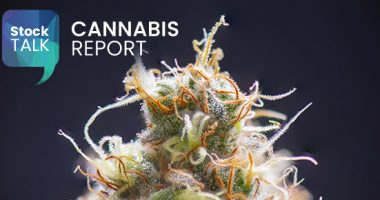We continue to cover the copper story by looking at the supply and demand cycle, the EV movement, and the details behind the copper squeeze. World Copper Ltd. (TSXV:WCU) CEO Nolan Peterson, joins The Market Herald Canada’s Coreena Robertson on the Expert Exchange.
TMH: Nolan, let’s talk about copper, starting with its demand. As we transition to net zero, over 22 billion pounds will be needed just for EVs. What are we looking at compared with the projected and available supply?
Peterson: Copper is always talked about in the context of, you know, greenification, the changes in the modern economy, electrification and use in electric vehicles. But we also have to remember that there’s always a steady state of demand that is in place from just population growth, building new buildings, infrastructure in cities, and then of course developing nations starting to attain the standards that we enjoy in the West. You add on top of that some of the things we talked about, including demand for electric vehicles, and it’s going to create a very, very tough situation for supply to keep up with.
So demand right now is basically in line with supply. I think there’s a slight surplus of supply, but you know, that’s with all the uncertainty that’s going on in the world right now. So as things start to settle down as we hope they will at some point, you know, and something’s got to give, as the world gets back on track. Demand is expected to increase significantly, and we’re just not in a position on the supply side to keep up with it.
TMH: Chile’s output sank 14 per cent annually in May. It’s the latest sign of a decline in global supply, amid the demand for metals used in the transition to sustainable energy sources. What can you tell me about that?
Peterson: So, this is a trend that Chile has been noticing for a long time. So just to put a point on it, Chile is the largest producer of the raw copper concentrate and copper product that is basically produced that fuels the global economy to the tune of about 25% to 30% of the world’s copper comes from Chile. As well, they hold 25% to 30% of the reserves.
Now, as the mine’s mine, what typically happens is the grades start to decline, right? So you have to put more capital in to achieve the same production levels as previous or you start to slip. And that’s what Chile has been experiencing. It’s a mixture of the mines that are in place right now. The grades are declining. It’s becoming challenging to keep up with the amount of production required, and at the same time, there’s been a slowdown in investment into Chile for new mines, for approvals of new mines. Little bit of, you know, investors in markets holding off on investing in Chile because of uncertainty (in) Chile and South America.
So that has certainly contributed to it. And globally there’s a challenge as well in declining grades and supply levels
TMH: And in terms of less investment, is that just something we’re seeing right now?
Peterson: Yeah, there is that for sure. And then when you talk about Chile specifically, I don’t want to get too political, but there are other companies, much larger companies (that) have made statements saying that when as long as the current situation for developments and permitting and taxation have big question marks around them, they are holding off on investments.
But that may also be an alignment and a cover story for just the way the economy is right now. Nobody wants to write big checks or anything.
TMH: Now let’s talk about the great copper squeeze. What is the current discovery situation for copper and the imminent challenges that we’re facing?
Peterson: So, it’s really putting it all together on the supply side and the demand side. Usually when we are in these types of situations, we see a decrease in supply which leads to higher prices. And for copper, again, putting it together, we are seeing a demand increase and a supply shortage that is not being made up. So supply is actually projected to slow its growth or decline in the coming years while demand steadily marches upward.
So it’s creating a very challenging situation for miners. We in the junior sector, like World Copper, continue to look for new discoveries. We find them, we identify them, but the appetite for investment from the major mining companies has been slow as well. They have not committed to capital spend. They haven’t built major mines.
I think that the last couple major mines that are coming online this year and next year started three or four years ago, and it takes at least five years anywhere in the world to permit and put into operations a major mine and none have started in the last three years.
So that has basically already put us on the back foot for bringing in new supplies. So it’s not the discovery of new deposits, it’s the development that’s the challenge.
TMH: And how is World Copper facing that directly? What are you doing?
Peterson: Well, No. 1, we are exploring for new properties. … We have two properties that have potential for development. We are making the case that they are investible in the market and for major companies and partners that want to see these projects develop. That’s something that we do all the time. That’s our bread and butter.
And then also we do interviews like this and have discussions with investors to really help them understand the importance of continuing to invest and to be thinking about two, three, four, five years down the down the line when a copper supply shortage could put copper into $7 or $8 territory. I don’t want to make predictions, but these are numbers that some analysts have put out there. So it’s not just me hyping it up, but we want to be in position and have our assets ready and our investors and shareholders positioned so that we can benefit from that when the time comes. And that’s what we do basically on a day-to-day basis.
For more information, visit the World Copper Ltd. website: www.worldcopperltd.com.
Join the discussion: Find out what everybody’s saying about this stock on the World Copper Ltd. Bullboard, and check out the rest of Stockhouse’s stock forums and message boards.
The material provided in this article is for information only and should not be treated as investment advice. For full disclaimer information, please click here.




